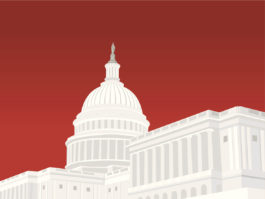The COVID-19 pandemic has certainly set a somber tone for our current news media. But there’s one player among headlines that may hold a silver lining or two – The Coronavirus Aid, Relief, and Economic Securities Act (CARES Act). This legislation, enacted a little over a week ago, put $2.2 trillion in relief funds into action to assist the American people, our businesses, and our economy during our nation’s state of crisis.
The Act itself is lengthy and covers a myriad of topics, which can be overwhelming. Benefiting fully from this legislation starts with having a firm understanding of what relief it provides, to whom it will be provided, and how best to access said relief.
We want to take a look at one section in particular here, Section 2206, Exclusion of Certain Employer Payments of Student Loans. Specifically, we want to focus on what this section means for businesses already participating in an Educational Assistance Program, as well as how other businesses can create a program to take advantage of this legislation as a tool for recruiting and employee retention during the COVID-19 crisis. Section 2206 of the CARES Act amends the 1986 legislation in §§ 127 and 221 of the Internal Revenue Code (IRC).
What was allowed, and what changed?
IRC § 127 set the stage for Educational Assistance Programs, or plans set in place by employers for the “exclusive benefit of his employees to provide such employees with educational assistance.” Under these programs, IRC § 127 allows employers to make periodic contributions of up to $5,250 in educational assistance per year, per employee, toward qualified tuition, fees, and expenses. Any contributions over $5,250 counted as taxable income for the employee.
With the CARES Act, employer contributions toward principal or interest on an employee’s qualifying student loan of up to $5,250 per year are tax-free – for both employer for payroll purposes and the employee for income tax purposes – when these contributions are made any time after March 27, 2020, through December 31, 2020. There’s a great deal of potential benefit for employers and employees.
Generally speaking, the IRS considers cancellation of debt on a borrower’s behalf as part of the borrower’s income. So, for the nearly 45 million Americans with outstanding student loans, a job offer tied to tax-free educational assistance could be particularly attractive. For employers looking for new ways to hire and retain employees, now may be the time to expand or launch your business’s Educational Assistance Program.
Why? Let’s look at the numbers…
One in four Americans have outstanding student loans and have collectively amassed a staggering $1.56 trillion in student loan debt. According to The Institute for College Access and Success (TICAS), the average outstanding student loan debt per individual for 2018 in Maine was $32,676, ranking Maine at #8 among the states with the highest student loan debt averages. So, repaying these loans is something employees and prospective hires are likely thinking about.
There are undoubtedly a great deal of Millennials among today’s job holders and seekers, and the Office of Federal Student Aid’s Federal Student Loan Portfolio tells us that, as of 2019, Millennials aged 24-35 owe the most per individual in student loans. Debt is a huge point of stress, so these programs are likely to attract new and upcoming talent in the Millennial age group. Small businesses, often unable to offer the same level of overall benefits for their employees, can find themselves struggling to compete with larger businesses for the “rock stars” among upcoming college graduates, as well as for sought-after established talent looking into a job change. Programs like these can help a prospective hire take notice when your company makes an offer, and they can make your existing employees loyal to your business.
These programs can also have a long-lasting impact on your employees’ sense of financial stability and job security. And, ultimately, those effects can ripple, leading to a better overall economy. The expected benefits from an increase in these types of programs has already led to a push for permanent legislation. Student loan assistance gives employees the freedom to manage their income in a different, smarter way. They are more likely to save for retirement and make larger investments, like home and auto purchases. And these are the things that will ultimately help boost our economy over time.
For the millions of Americans out of work and filing for unemployment benefits, the continual accrual of bills and interest can be disheartening. In addition to the aid provided in Section 2206, Section 3515 of the CARES Act, sets the interest rate at 0% on certain federal student loans through September 30, 2020 for individuals, to provide additional relief to those with outstanding student loan debt. Find out more about this provision.
Contact ARB
We are committed to keeping you updated on pertinent legislation and updates. We will be publishing articles on numerous sections within the CARES Act in the coming weeks. We welcome you to contact us for additional information or with questions on Section 2206, or regarding other provisions in the CARES Act legislation.
by Daniel Doiron, CPA, CVA





